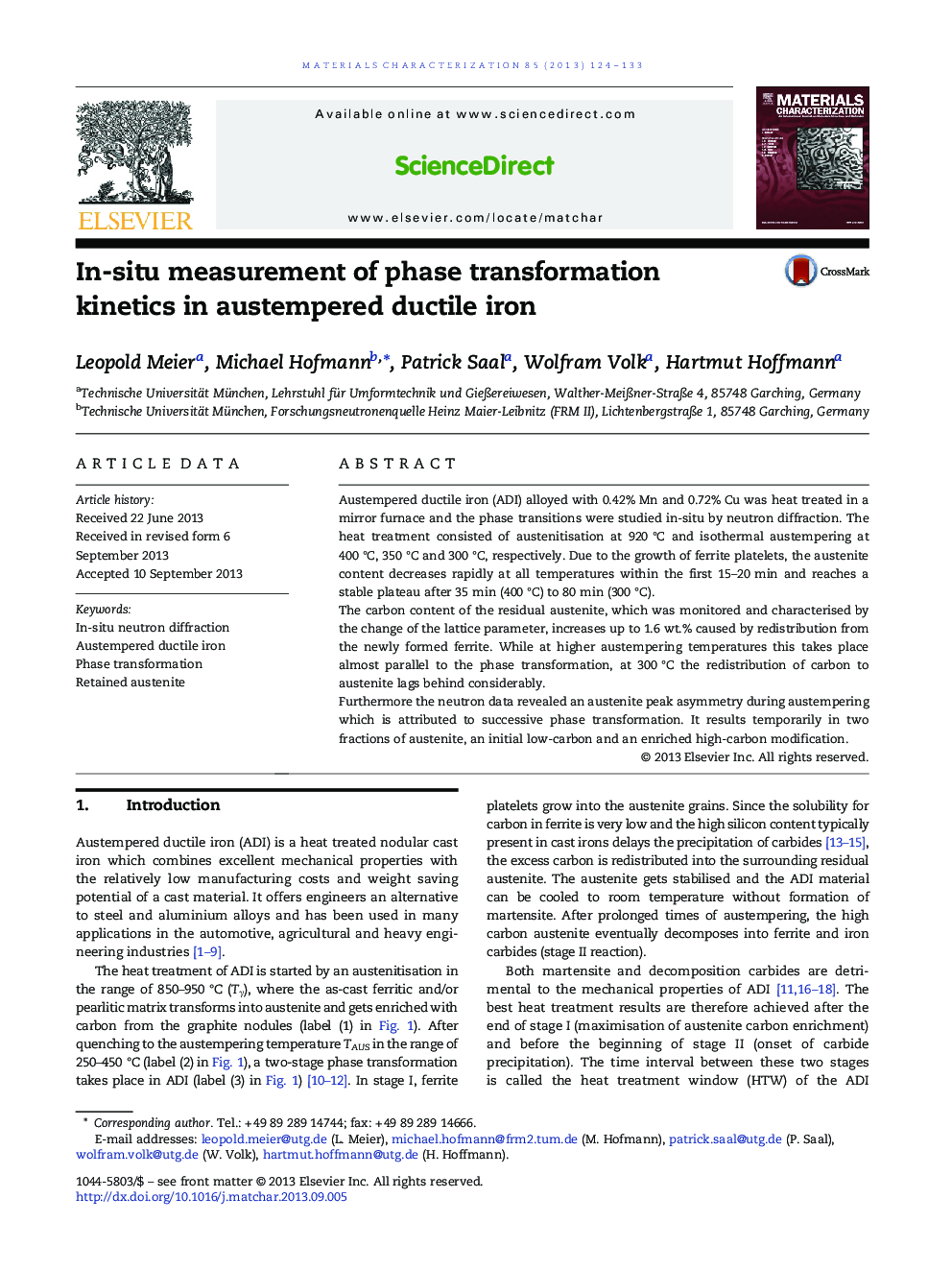| Article ID | Journal | Published Year | Pages | File Type |
|---|---|---|---|---|
| 1571226 | Materials Characterization | 2013 | 10 Pages |
•The heat treatment of ADI was studied in detail by in-situ neutron diffraction.•The phase fractions were monitored and evaluated quantitatively.•The austenite carbon content increased up to 1.6 wt.% during austempering.•Peak asymmetries indicate two austenite fractions during highest transformation rates.
Austempered ductile iron (ADI) alloyed with 0.42% Mn and 0.72% Cu was heat treated in a mirror furnace and the phase transitions were studied in-situ by neutron diffraction. The heat treatment consisted of austenitisation at 920 °C and isothermal austempering at 400 °C, 350 °C and 300 °C, respectively. Due to the growth of ferrite platelets, the austenite content decreases rapidly at all temperatures within the first 15–20 min and reaches a stable plateau after 35 min (400 °C) to 80 min (300 °C).The carbon content of the residual austenite, which was monitored and characterised by the change of the lattice parameter, increases up to 1.6 wt.% caused by redistribution from the newly formed ferrite. While at higher austempering temperatures this takes place almost parallel to the phase transformation, at 300 °C the redistribution of carbon to austenite lags behind considerably.Furthermore the neutron data revealed an austenite peak asymmetry during austempering which is attributed to successive phase transformation. It results temporarily in two fractions of austenite, an initial low-carbon and an enriched high-carbon modification.
